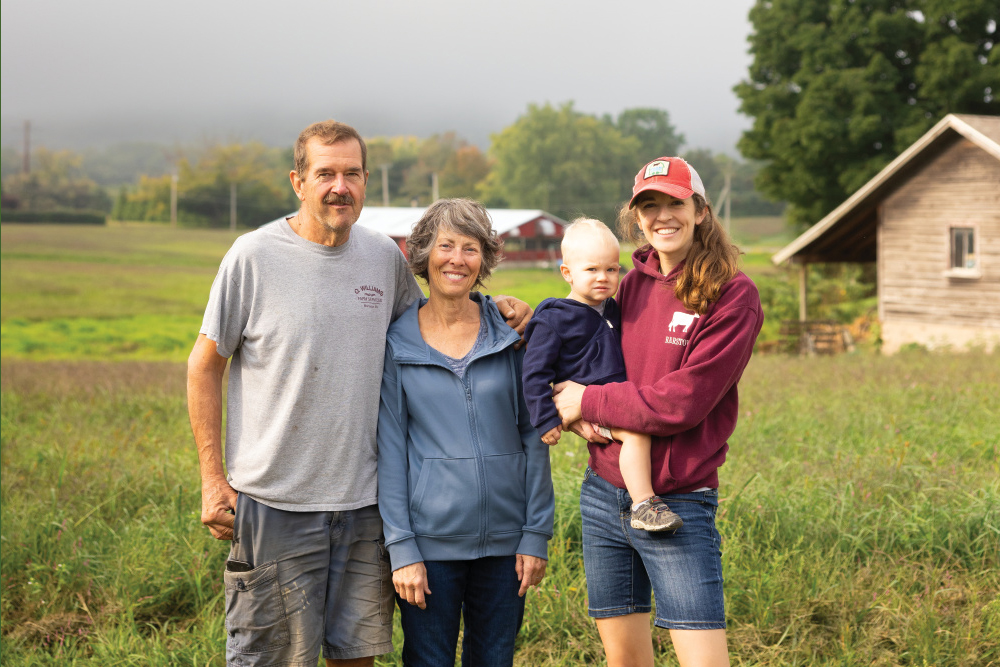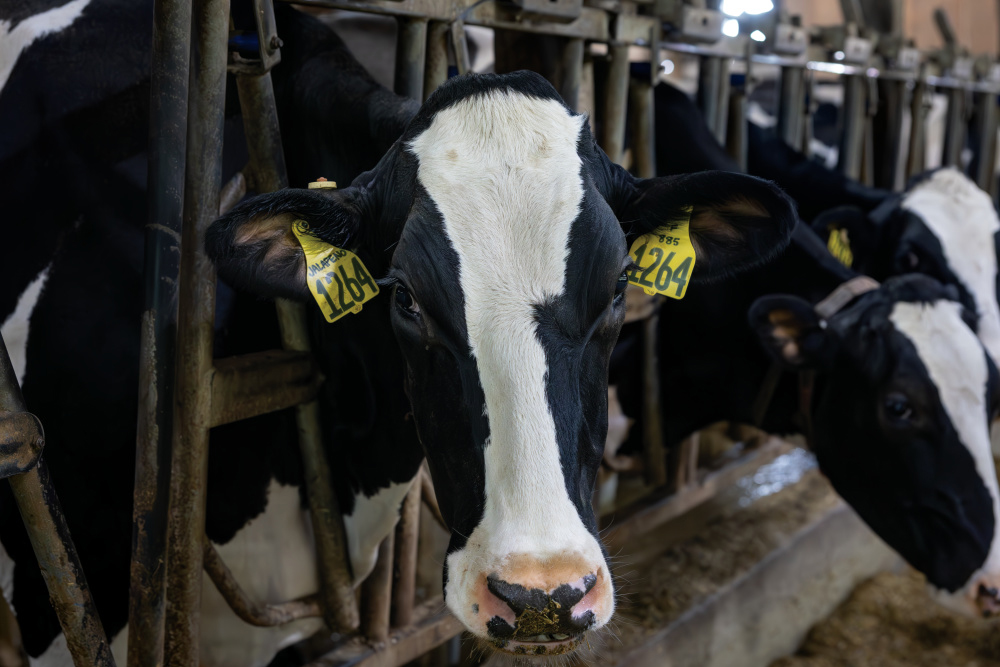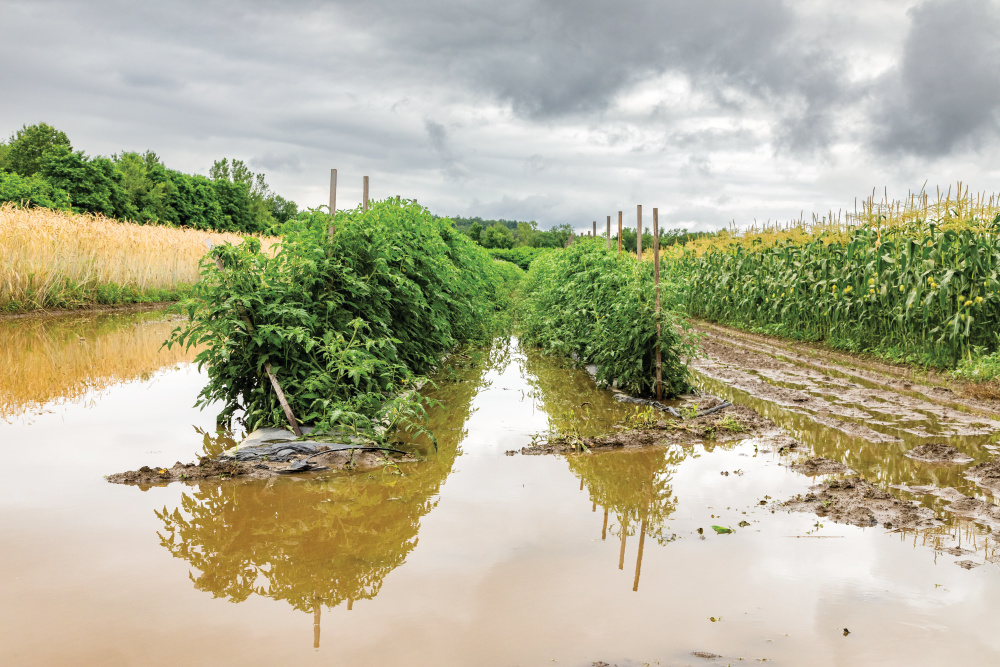On Posted on by to Environment, Farm, Massachusetts Environment
 David and Diane Barstow, daughter Denise Barstow Manz and grandson Arthur of Barstow’s Longview Farm; Photo credit: Shayna Cooley
David and Diane Barstow, daughter Denise Barstow Manz and grandson Arthur of Barstow’s Longview Farm; Photo credit: Shayna Cooley
In July 2023, Barstow’s Longview Farm in Hadley, Massachusetts, suffered a major blow, as heavy rain and flooding from the nearby Connecticut River inundated 145 acres of hay and corn fields.
“We lost, outright, 40 acres of corn. It was not usable, and we removed it from the field in August to reduce the spread of disease,” says Denise Barstow Manz, part of the seventh generation at Barstow’s Longview Farm, which includes a dairy, a bakery and crop fields that produce feed for the cows.
Of the 300 remaining acres of corn, a third had critically low yield. Then, a bad situation worsened as sustained and heavy rains decimated the farm’s hay and sorghum crops.
“Come harvest time, we had an empty bunker silo that ought to be filled heading into winter,” Barstow Manz says.

Helping Hands
Luckily, the dairy farm was able to take advantage of a few programs to address its losses. It received an Emergency Farm Fund loan from local nonprofit Community Involved in Sustaining Agriculture (CISA), two small grants from private foundations and financial assistance from the Massachusetts Department of Agricultural Resources’ Natural Disaster Recovery Program, along with some crop insurance money.
Barstow’s was just one of many farms across the state that suffered such impacts in 2023. Freezes in February and May destroyed peach crops and reduced blueberry and apple yields. In July, floods led to tens of millions of dollars of crop losses throughout the state. Then, a pattern of heavy rains continued to damage what was left in farmers’ fields.
In all, producers reported $65 million in weather-related farm losses to the state that year. Winton Pitcoff, MDAR deputy commissioner, says this figure likely doesn’t scratch the surface, as it only includes farms that applied for state assistance and doesn’t account for longer-term impacts from weather.
Many Massachusetts farms survived thanks to the web of support that kicked into place from various sources, says Claire Morenon, CISA communications manager.
See more: Massachusetts Focuses On Climate Smart Farming Efforts

For instance, CISA’s Emergency Farm Fund, which offers zero-interest loans, upped its typical $5,000 loan limit to $25,000, as it has in response to earlier major weather events.
The organization also joined forces with the United Way of Central Massachusetts and Community Foundation of Western Massachusetts, which also received support from the governor, to raise $3.3 million in private and business donations for the Farm Resiliency Fund, which provided support to local farmers.
Meanwhile, the state awarded $20 million in disaster relief funding, which farmers used for various needs, including cleanup and staff payroll, as well as to purchase equipment that will help mitigate climate change impacts in the future.
Plus, farmers supported farmers. For instance, many sold products at cost to each other so that community supported agriculture farms could keep going or people could keep their farm stand stock, Morenon explains.
See more: Massachusetts Ag Education Cultivates the Next Generation of Agriculturalists

The Road Ahead
The 2024 growing season presented much more favorable weather to farmers, but impacts are still being felt from 2023.
For instance, Barstow Manz says mycotoxins in the soil from the floods will remain for several years to come, almost certainly infecting future corn crops. She adds the farm is on alert for future climate impacts.
That’s why Pitcoff stresses the importance of preparing farms for a myriad of climate-related threats through resilience building, which is one of the focuses of MDAR’s programming.
“There are just more and more frequent climate-related challenges, and it’s going to be different each year,” Pitcoff says, noting that while 2023 saw flooding, farmers faced drought the previous year. “The important thing is helping to make farmers resilient so they can grow a crop that sustains their business, even with challenging weather.”
